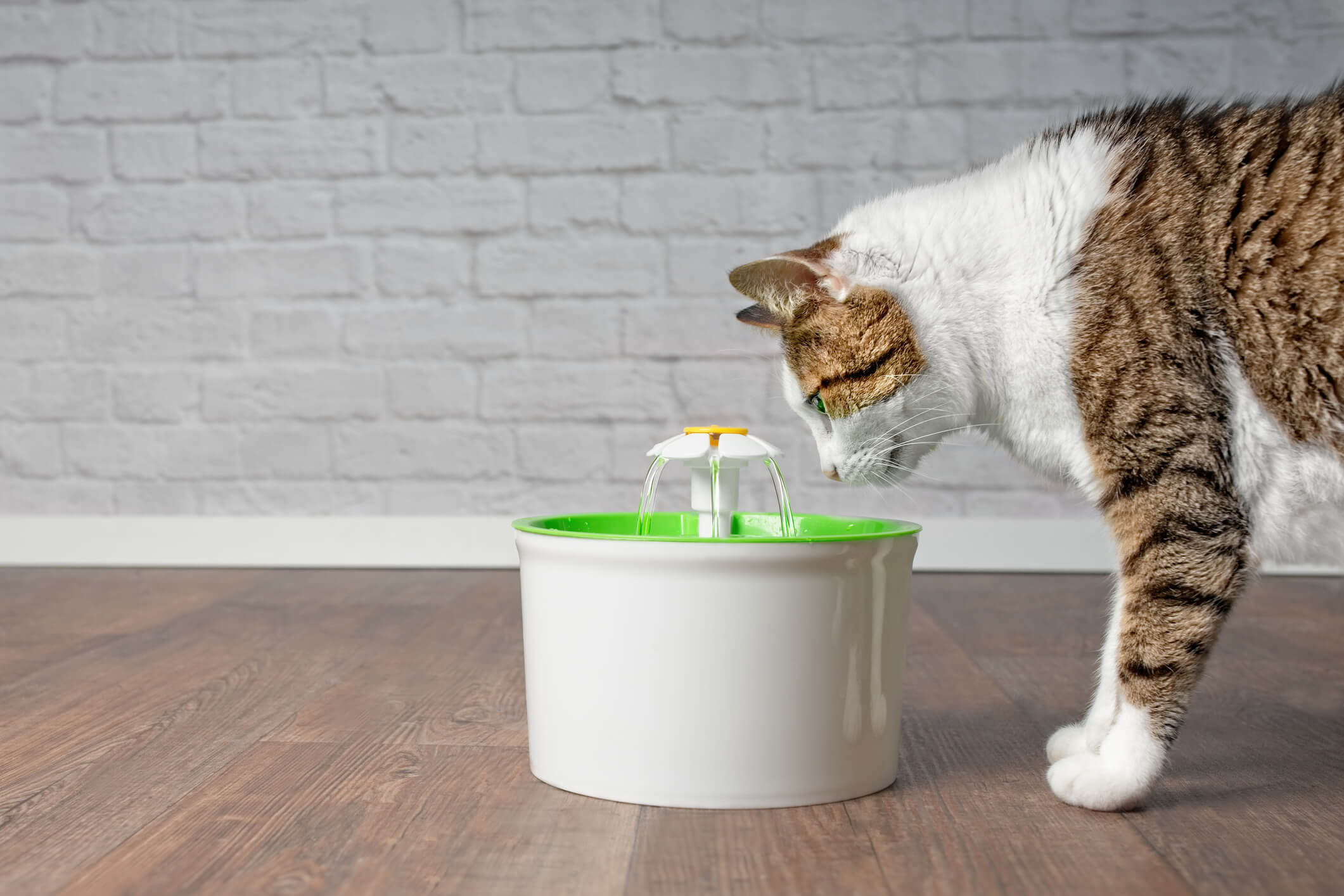
How (and Why!) to Encourage Your Cat to Drink More Water
Cats don’t visit the water bowl very often. It’s in their nature to survive on very little water, which mostly comes from birds and rodents in the wild. But your precious fur baby doesn’t have to fend for itself. Domestic cats have loving pet parents who will tend to their every need, which includes making sure they drink enough water.
Just because cats can live off minimal water doesn’t mean that they should. Dehydration is a risk factor for megacolon, kidney disease and urinary tract infections. With a few helpful tips, you can encourage your kitty to drink more water and avoid some serious health problems!
Why your cat should drink more water
Cats need less water than other animals. Their ancestors lived in dry climates where they had little access to water. Cats evolved to get most of their water from prey, which is why your kitty visits the water bowl less often than their canine companions.
While cats naturally limit their water intake, it’s possible for your feline friend to become dehydrated. Cats that don’t drink enough water run the risk of developing a urinary tract infection. These bacterial infections usually affect the bladder or urethra, which causes painful and frequent urination. Dehydration may also cause cystitis, a condition where the bladder walls become inflamed.
Dehydration is often a precursor to kidney disease. The kidneys filter toxins out of the blood and produce urine to direct this waste out of the body. When your cat is dehydrated, their kidneys don’t have enough water to eliminate toxins. The kidneys will produce less urine, and toxic substances will linger in the body for too long. Without proper treatment, this disease can advance to kidney failure.
Cats that drink too little water may also become constipated. The average cat produces one bowel movement a day, but dehydration can reduce that number to once every three days. Over time, fecal matter may become impacted inside the colon and form a hard blockage. Constipation that’s left untreated may eventually turn into megacolon, a serious condition where the intestinal muscles are too weak to pass stool.

How to add water to your cat’s diet
Cats are very particular about their drinking water. If the water dish isn’t to their liking, a cat will avoid drinking water altogether. Appealing water sources are essential for staying hydrated. These tips can encourage your cat to increase their water intake.
- Feed your kitty wet food: Due to their ancestry, cats prefer to get water from meat rather than a water bowl. Canned wet food is the closest option to simulate how cats would eat in the wild. You can also warm up wet food a little bit to enhance the aromas and make it more appealing. Always consult a veterinarian before adding wet food to your kitty’s diet.
- Add water or broth to dry food: Your cat might want to stick with their dry food. If that’s the case, increase their water intake by slowly mixing a little bit of broth or filtered water into the kibble. Start with a small amount, then increase the moisture over time as your kitty gets used to it. Chicken, beef and bone broths provide extra flavor, which is great for cats that avoid the water dish.
- Plop in a few ice cubes: Cats prefer cold water, especially during the warm months. A few ice cubes can entice picky cats to drink more water. Plus, many cats enjoy watching ice cubes float in the water bowl. This provides mental stimulation and draws their attention to clean drinking water.
- Switch to a drinking fountain: Cats in the wild drink from running water because it’s less likely to contain parasites and other infectious diseases. For this reason, domestic cats tend to consume more water when they have a drinking fountain. The water is constantly cycled through a filtration system to provide fresh drinking water for kitties. A cheaper alternative is letting the sink faucet run at a low stream. Remember to use a cool temperature!
- Pick the right water bowls: Don’t be surprised if your cat refuses to drink from a plastic water bowl! Plastic can give water a funky taste, and the material is more likely to harbor bacteria. Encourage your cat to drink more water by swapping the plastic bowl for glass, ceramic or stainless steel. Purchase multiple bowls and place them in low-traffic areas around the home to increase their access to water.
Although cats need less water than other pets, proper hydration is essential for a healthy diet. Cats drink little water to begin with, so it’s difficult to detect changes in behavior regarding water intake. Encouraging your cat to drink more water can stave off dehydration and help vital systems run smoothly.


